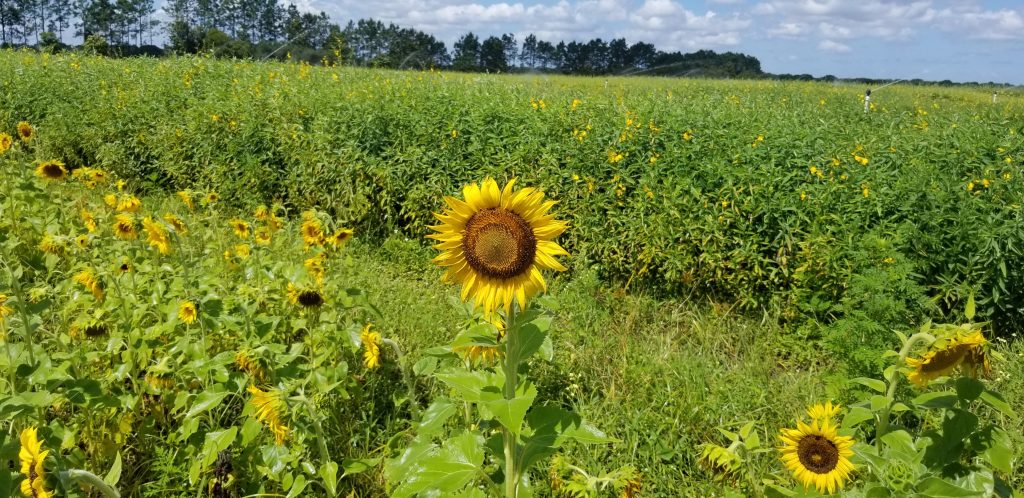
By Clint Thompson
Most South Florida vegetable and specialty crop producers don’t utilize cover crops during the summer. University of Florida/IFAS research might change that philosophy in the future.
Phillip Williams, an assistant professor at the UF/IFAS Southwest Florida Research and Education Center, has a year and a half of research data that point to multiple advantages that cover crops provide for producers.
In his ongoing research, Williams incorporates sunflower and sunn hemp as a cover crop mixture with added compost and compares the results to fallow ground production that growers generally utilize during the summer.
The biomass of sunn hemp and sunflower with compost was about 10,000 pounds per acre of above-ground biomass. In the cover crop where compost was not applied, it was about 6,800 pounds of above-ground biomass. There was also carry-over throughout the season where there was significantly less weeds where the cover crop was planted as opposed to the fallow ground.
Total marketable yield for the subsequent crop was also highest on the cover crop-compost plot and lowest on the fallow ground.
“(The research’s) telling me that (the cover crops are) significantly decreasing the weeds in the row middles. It gave us cover during the summer, so instead of having bare soil, we actually had something out in the field that can cycle nutrients, can cycle carbon and keep the soil stabilized so it’s not moving off site,” Williams. “And what farmers really care about, is yield goes up whenever you apply compost and/or cover crops.”
Why the Lack of Cover Crops in South Florida?
South Florida generally has three growing seasons: in the fall, winter and spring. Williams believes one reason for the lack of cover crop usage is growers are transient. Once they are done in the spring in South Florida, they relocate to North Florida or other states. It is mostly a time management factor.
Another reason is it takes time to see the direct benefits.
“It also looks like when you’re planting something, if you can’t directly see the benefits, a lot of times people won’t do it,” Williams said. “When you’re planting the cover crop, it’s not something you can harvest and actually utilize. Therefore, it could be viewed in a negative light, because you’re not looking at the other benefits. These would be increased yield in the fall crop or decreased weeds. So you have to spray less.”









